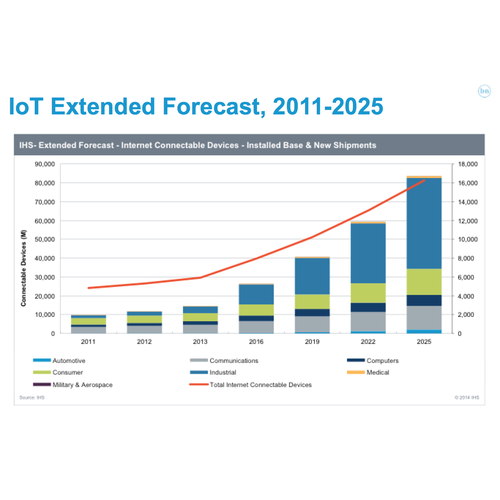
Published on 07/29/2016 | Technology
Connected nodes. From vehicles to meters and drives, intelligent devices dispersed throughout global energy and automation networks represent the answer to many of the worlds' problems. More specifically, the phenomena known as the “Industrial Internet of Things” (IIoT), touted by the largest companies in the world, represents the practical synergistic relationship between Big Data software and a diverse network of devices. Ironically, the slower moving automation corporate juggernauts that have been the driving proponents behind the Industrial Internet concept are not providing the innovating change that they had hoped to provide. Rather, it is unstructured database software technologies, and their providers, that will emerge as the enabler of the Industrial Internet of Things. How? - open source unstructured data; such as Hadoop.
I remember, from a Millennial’s perspective, when companies like Oracle, Microsoft and SAP have been the dominant provider of BI enterprise systems. Today, much of their product offering is unable to handle the scalable surplus of data that is available. Big Data is not limited to an enterprise server or the power of your processor. It is scalable, distributed and ever-expanding. It now exists to offer value beyond online consumer optimization, lead nurturing and banking ETL. Big data now touches industrial manufacturing, rail lines, cars, streetlights, jet engines, home-heating systems and oil pumps across the globe. Big Data is now Enormous; and we are learning to use it in ways that do more than optimizing consumer retail spend, but to enable an automated and efficient planet. This concept and evolving reality is called the Industrial Internet of Things and many regard it as the fourth industrial revolution.
Today, it is estimated that there are about 5 billion devices connected to the internet. By 2025, it is estimated that there will be 35 billion devices connected to the internet; of which 22 billion will be non-consumer products. McKinsey Global Institute reports that IoT businesses will reach $6.2 trillion in revenue by the same year. The future of a connected world represents it’s greatest value and growth in the form of intelligent sensors, meters and machines. The opportunity for growth and real value to the global state of industry, environment and energy lies within smart machines, not phones and smart watches. To make IIoT a reality, a connection between the fragmented industries of unstructured database systems, firmware, networking hardware and industrial machines are slowly becoming tethered together. But this process is not without challenges.

It has not been in the interest of conventional BI platforms and automation vendors to open their proprietary system offerings for cross-pollination. Fear of share degradation and an inability to support this futuristic market has long influenced enterprise software and industrial automation companies alike to product closed-source offerings. Now, unstructured data is disrupting this trend and shoving us into the age of the IoT; regardless of the much of the market's willingness to play a role.
Sensors already read and transmit data of all sorts - but where does it go and how do we use it? Conventionally, network management is an arduous and expansive feat that demands an expensive infrastructure and localized structured databases to gain intelligent insights and control over operations. BI companies have made a killing over the last 15 years selling services to support their particular brand of enterprise management software and database platforms due to the fact that most of the customers will unable to support themselves. The amount of data you were able to process depended on the power of devoted servers and machines. Data was valuable, but also very expensive to obtain and use.
The open-source software framework of Apache Hadoop, for example, has flipped this reality on its head, giving companies the ability to afford dynamic data mining and visualization solutions that are powerful and scalable. Data, whether it is consumer information or stream data from millions of temperature sensors, can be aggregated and managed using the same software platform. Smaller software companies are building off of the Hadoop Distributed File System (HDFS) to offer the market unique visualization applications that allow the average business manager and clerical worker to extract insights from their business that once required the expertise of data scientists or a team of consultants. While this has put pressure on the Oracle’s, SAP’s and IBM’s of the world, it has opened the floodgate of innovation within hardware manufacturers like GE, Cisco, HP and Moxa to bring the internet to the industrial, traffic infrastructure and energy systems of the world. The industrial systems of the world now stand to be synergistic with software analytics.
As a society, we don't need another restaurant rating app or social network as much as we need more efficient traffic management systems and energy production. The world doesn't need another smart watch. The world needs an industrial revolution and distributed computing is the catalyst.